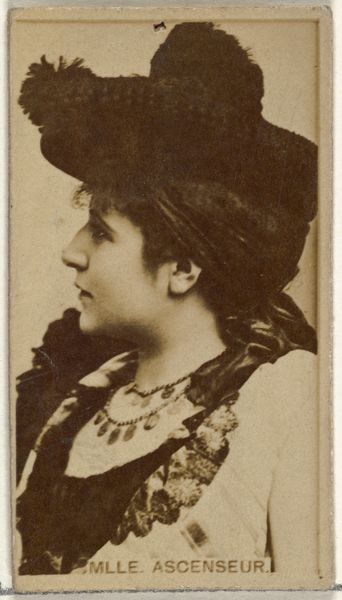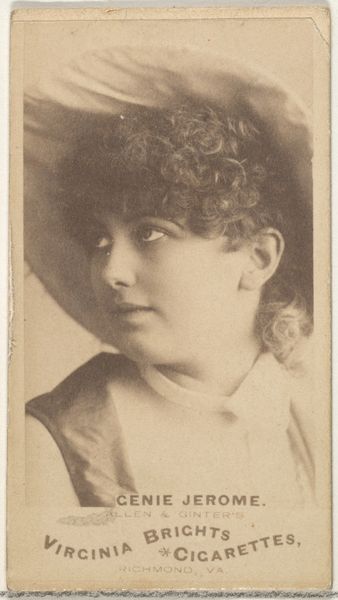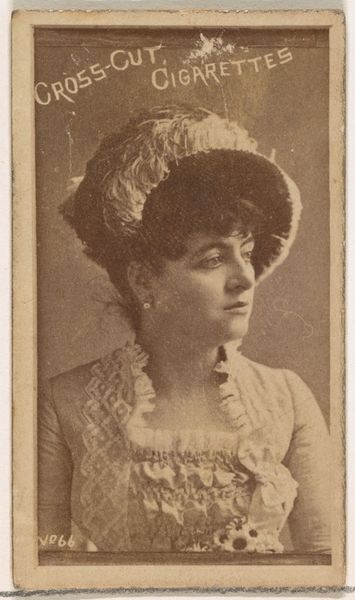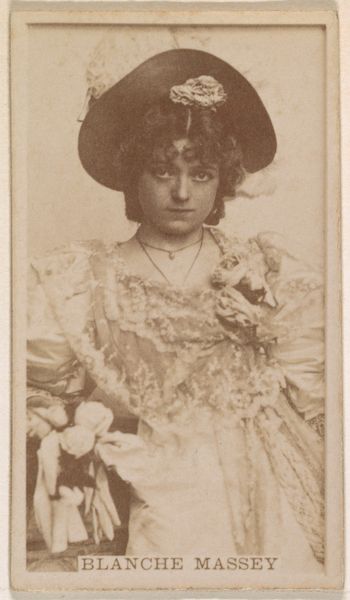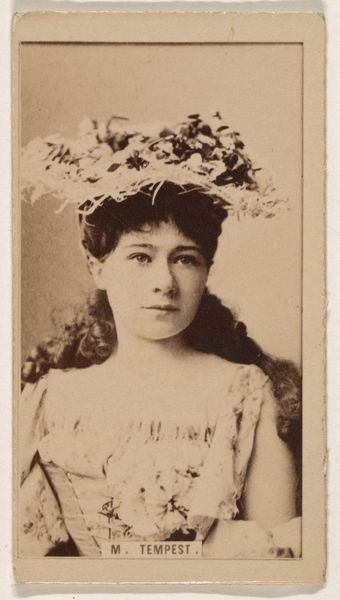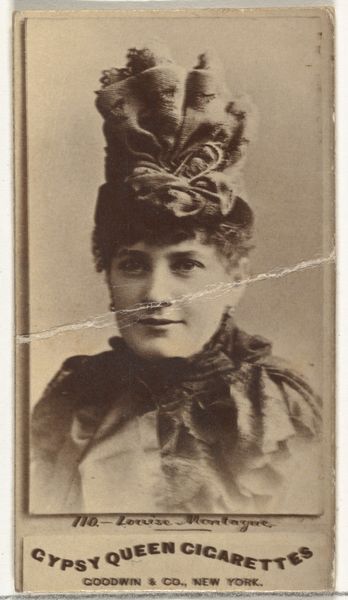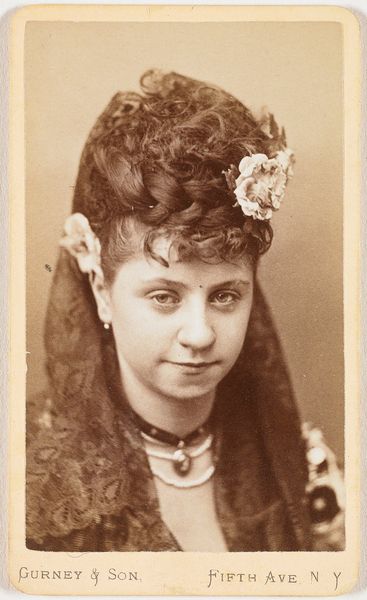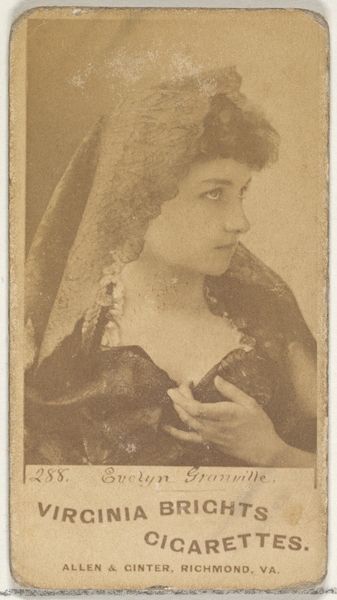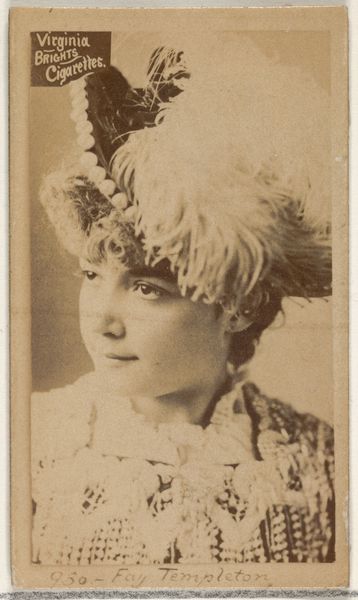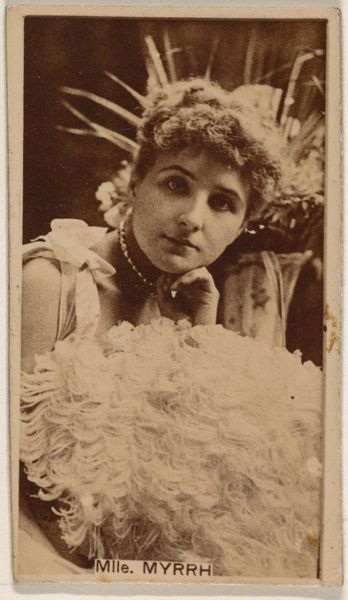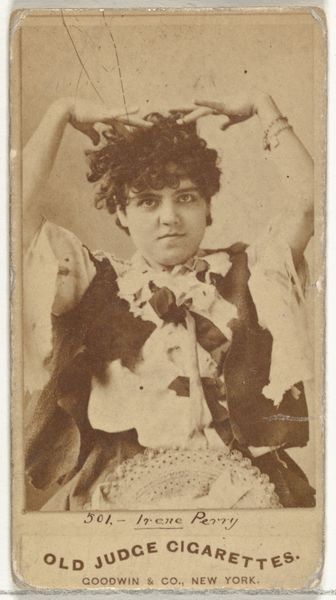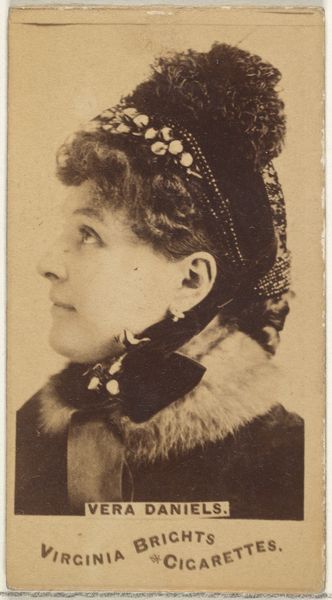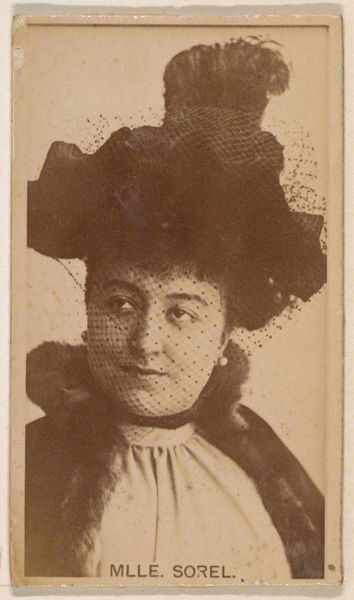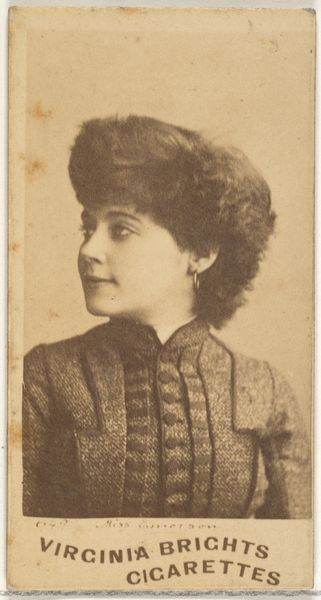
Miss Van Breugh, from the Actresses series (N246), Type 1, issued by Kinney Brothers to promote Sporting Extra Cigarettes 1888 - 1892
0:00
0:00
drawing, print, photography, albumen-print
#
portrait
#
drawing
# print
#
photography
#
historical photography
#
albumen-print
Dimensions: Sheet: 2 3/4 × 1 5/8 in. (7 × 4.2 cm)
Copyright: Public Domain
Curator: This albumen print captures Miss Van Breugh, an actress featured in the "Actresses" series produced by Kinney Brothers Tobacco Company sometime between 1888 and 1892. What strikes you about this portrait? Editor: There's a stark simplicity to the presentation – a single figure, almost monochromatic, against what looks like a carte-de-visite backing. I’m thinking about mass production; each print as a consumable object linking artistry to the machinery of cigarette marketing. Curator: Exactly. These portraits weren’t simply art; they were commodities embedded in a complex system of exchange. Consider how these cards circulated – predominantly through the hands of men, often framing actresses as objects of desire within a patriarchal gaze. Miss Van Breugh is thus doubly mediated – by the photographic process, and by the social structures defining female performers at the time. Editor: The materials, an albumen print, are interesting to me. What were the labor practices involved in creating such objects? This image, seemingly straightforward, emerges from a chain of exploited labor - the workers processing albumen, photographers setting up studios, and the women whose images were circulated as marketing tools. Curator: Indeed. This relates to the economic realities faced by many actresses. While a select few achieved stardom, the majority struggled for recognition and financial stability, a struggle shaped by both their gender and profession. This card, while seemingly a celebration of Miss Van Breugh, subtly reveals those underlying tensions. The decorative elements and formal attire present an idealised image which papers over her difficult position as a working woman. Editor: I agree. It exposes a lot about labor. Also, consider the trade cards and advertising – the very support system reveals much about consumption and leisure in the late 19th century. Curator: And the very idea of circulation highlights this interplay between art, commerce, and gender. What does it mean for Miss Van Breugh’s identity to be both celebrated and commodified? What does this early form of publicity say about a society's values and expectations around female identity? Editor: Precisely. Analyzing it reminds us that an image’s surface belies a layered material and social history. These images act as potent records of the production processes that generated them. Curator: Looking closely, Miss Van Breugh is situated within complex systems of production and gender. Editor: And each cigarette card functioned as a vehicle carrying economic and social messages along with nicotine.
Comments
No comments
Be the first to comment and join the conversation on the ultimate creative platform.
